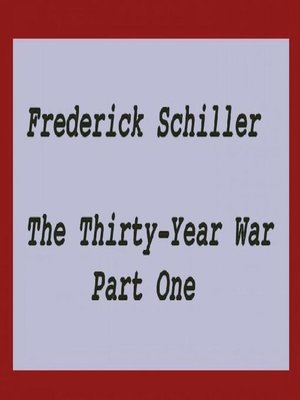
Sign up to save your library
With an OverDrive account, you can save your favorite libraries for at-a-glance information about availability. Find out more about OverDrive accounts.
Find this title in Libby, the library reading app by OverDrive.



Search for a digital library with this title
Title found at these libraries:
| Library Name | Distance |
|---|---|
| Loading... |
As F. Schiller himself has defended, a work does not have to bear a purely academic and rather boring style, in order to be qualified as historical.
The scene of this extensive work is the larger Europe from Russia to the Italian peninsula and the states bordering the Ottoman Empire. The actors of this so-called 30-year religious war were the sovereigns and churches of Europe. The political and military maneuvers are described, hence, in this masterpiece, in the literary style of a fiction, although the events and details related in it are truly historical.
In the first parts of the book, the different warring forces as well as their motives for going to war are presented.
"The prospect of independence, the rich plunder of the spiritual foundations must have made the regents craving for a religious conversion, and the weight of the inner conviction did certainly not have less strengthened this attraction in them; however, state reason alone could press them to that end."
With this sentence, Schiller makes his whole point about the war. It was not so much a precise religious doctrine for which the European powers were fighting against each other, but certainly the acquisition and the possession of wealth and privileges detained by the spiritual foundations.
Alliances, unions on one side, defections and betrayals on the other, are among all the various components that make up this war, to the image of the Hungarian leaders who allied themselves with whatever party would assure them the best of their interests. In addition to that, court judgments, intrigues and affairs, poisoning and outright financial corruption are among the weapons that Schiller also describes to render a vivid comprehension of this historical event to us.







